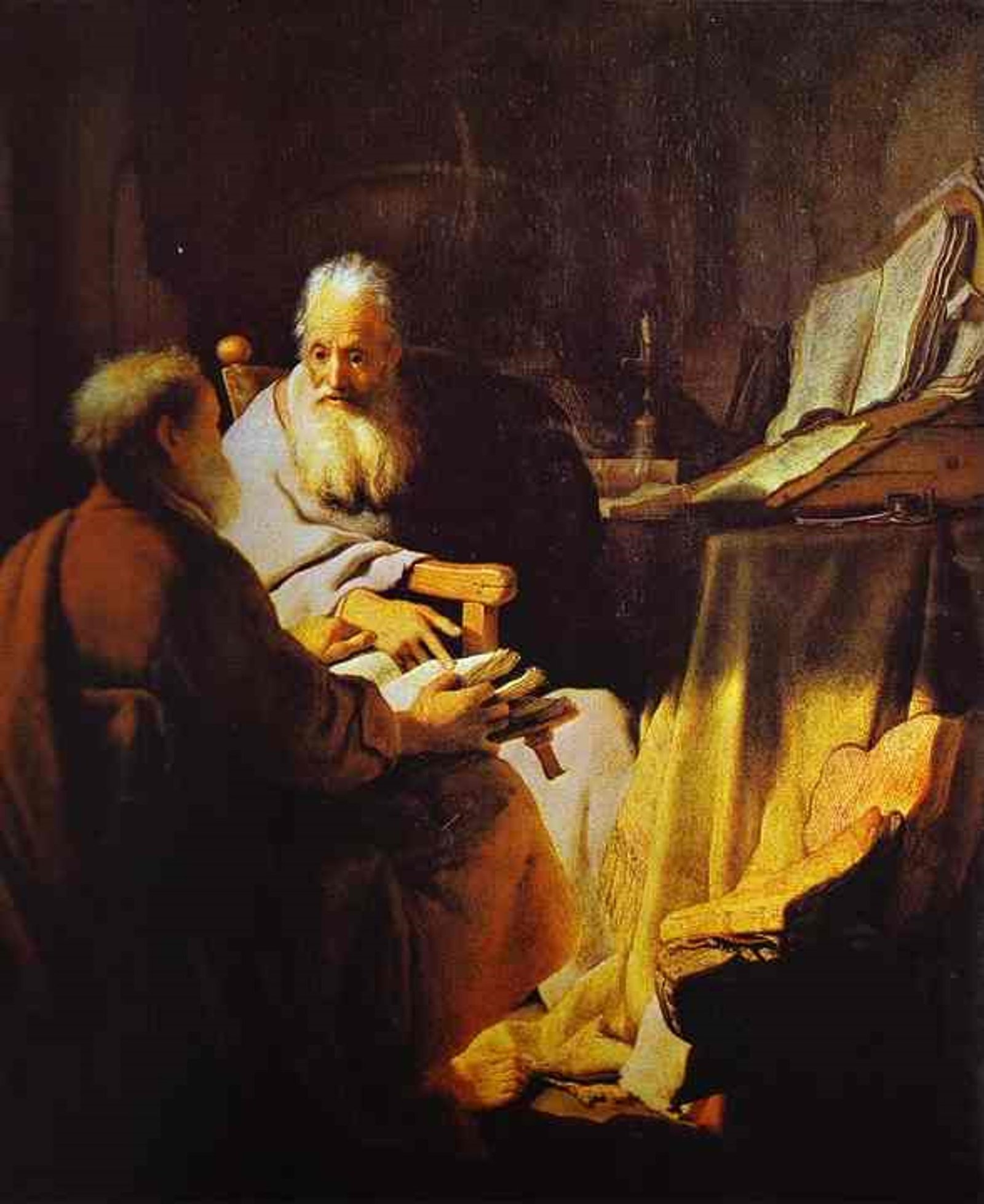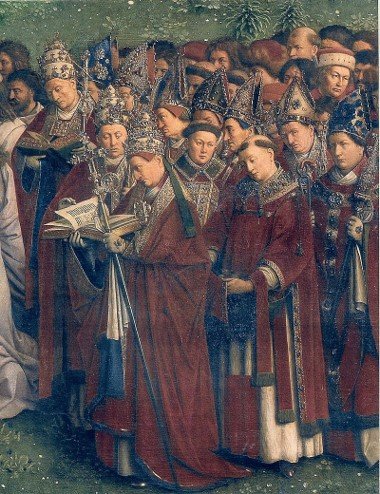Overview
Tradition – Scripture – Magisterium
Our Story
In his INAUGURATION to these Magisterial Summaries Mario Luigi Cardinal Ciappi, O.P.wrote:
“As a member of the Advisory Board, I congratulate George P. Morse, President, Gerard J. Marks, Vice President, and William E. May, theological advisor, on the publication of Precis of Official Catholic Teaching on Faith, Revelation, and the Bible, September 1990.
The inseparable bond between the Bible, Tradition, and the Church Teaching Authority was again proclaimed in the Dogmatic Constitution on Divine Revelation (Dei Verbum) on the Second Vatican Council.
In Chapter II, n. 10, the Fathers of the Council declared:
“It is clear, therefore, that in the supremely wise arrangement of Cod, sacred Tradition, sacred Scripture, and the Magisterium of the Church are so connected and associated that one of them cannot stand without the others. Working together. Each in its own way and under the action of the one Holy Spirit, they all contribute effectively to the salvation of souls.’
Admiring this same bond, so clearly set forth in our Preècis, in the Second Vatican Council, and the Letters of St. Paul, I repeat with the Apostle: “All that metiers is that in any and every way. ..Christ is being proclaimed! That is what brings me joy.
Indeed. I shall continue to rejoice in the conviction that this will turn out to my salvation, thenks to your prayers….” (Phil. 1:18,19).
Mario Luigi Cardinal Ciappi, O.P.
The Supremely Wise Arrangement of God

Sacred Tradition
Sacred Tradition comes from Christ. It’s the full, living gift of Christ to the Apostles, faithfully handed down through each generation. Through Tradition the Holy Spirit makes the Risen Lord present among us, offering the same saving Word and Sacraments that he gave to the Apostles!

Sacred Scripture
The Bible (from Greek, biblia, ‘books’) is the collection of 73 books that the Catholic Church believes and teaches is the written expression of God’s Revelation. These books form a single book which is the inspired word of God.

Magisterium
The Magisterium of the Catholic Church is the church’s authority or office to give authentic interpretation of the word of God, “whether in its written form or in the form of Tradition”
Categories & Documents
Each category consists of from 15 to 20 documents. Summaries of these documents will be published in individual books, corresponding with the eleven topics, and provided to persons who will benefit from their use as an aid to education, learning and teaching expertise.
It was planned to publish only in English and distribute the books to English-speaking countries; however, at the urging of our Curia advisers and in response to the urgent need of the Church in Eastern Europe, Africa, Asia, and elsewhere, CUSP endeavors to meet the need of the Church worldwide and to translate the books into as many languages as finances permit.
An outline of the prospective languages appears below on this website.


The Summaries provide accurate accounts of the substantive teaching in each document.
Scholars and others, particularly priests, are urged to consult the original documents for the purpose of serious study and reference. The summaries are intended to provide easy access to these crucially important documents of the Church’s Magisterium.
Only by knowing what the Church teaches on matters of faith and morals can Catholics rightly and intelligently carry out their vocation to bring to the world the light of Christ’s truth and, in this way, fulfill their baptismal commitment to participate in the redemptive work of Christ.
Prospective Audience

The Angelus – Jean-François Millet
The painting that is known as The Angelus was done in 1859 under the original title Prayer for the Potato Crop.
Painted as a series featuring the lives of French peasants, Millet’s work is a testament to the harsh life that hardworking farmers had to endure during this era.
The World’s Catholic Population

Some numbers
In February 2022, the Vatican released statistics showing that in 2020 the number of Catholics in the world increased by 16 million to 1.36 billion.
That means that 17.7% of the world’s population is Catholic. Of this total, 48% are in the Americas, with 28% living in South America.
Languages
The 6 most populous languages (in 10 countries) where Catholicism predominates include:
English (USA, Philippines)
Portuguese (Brazil)
Spanish (Mexico, Colombia, Spain)
Italian (Italy)
French (France and Republic of Congo)
Polish (Poland)
%
Catholics as Percentage of World
%
Percentge of Catholics in the Americas

What we do best

We seek to increase the number of resolute laborers in the vineyard of the Lord.*
* Painting of the Jesus parable, ‘Workers in the Vneyard,’
by Unwins, 1817
Over hundreds of years, the Church, through its Magisterium, has issued documents of great importance to Catholic Faith and life.
Many of these documents were promulgated by ecumenical councils of bishops throughout the world in union with the Pope.
Others were issued by the Popes themselves in the form of Encyclicals, Apostolic Letters, Discourses and Addresses intended to instruct on specific matters of faith and morals.
Roman Congregations issued other documents with the approval of the Popes.
But, regardless of form, all these documents provide the authentic teaching of the Magisterium established by Christ to teach in His name the saving truths of the Catholic Faith.
Recognizing that while the need for accurate information on the teachings of the Church is great, the volume of documentation is also enormous,
CUSP has undertaken to make that teaching more readily available and usable for priests, seminarians, and others who require ready access to the essential teachings found in these documents.
Our objective, therefore, is to aid in providing direction and education to young clerics so that they may not only know, understand and teach the Word of God, but defend the books inspired by God.
We seek to increase the number of “resolute laborers in the vineyard of the Lord…. Let priests, having perused the sacred pages on their own, distribute the heavenly treasures of the divine Word by sermons, homilies, and exhortations…. Priests cannot fulfill all this unless they have developed a practical and enduring love for Sacred Scripture in their seminary days.”
(Cf. Divino Afilante Spiritu, Pius XII, September 30,19¿3).
*Painting of the parable, by Jacob Willemszoon de Wet, mid-17th century
The Parable of the Workers in the Vineyard (also called the Parable of the Laborers in the Vineyard or the Parable of the Generous Employer) is a parable of Jesus that appears in chapter 20 of the Gospel of Matthew in the New Testament. It is not included in the other canonical gospels

* Painting of the parable, ‘Workers in the Vineyard’, by Rembrandt, showing the workers being paid that evening (1637) – Oil on canvas, in Hermitage Russia.


